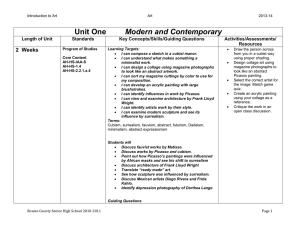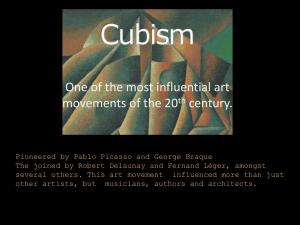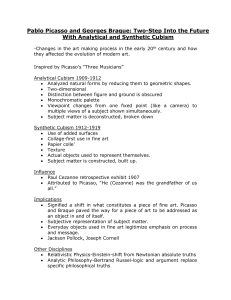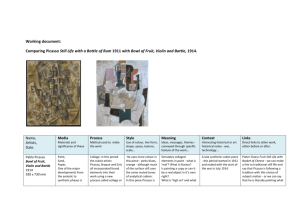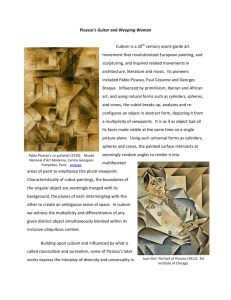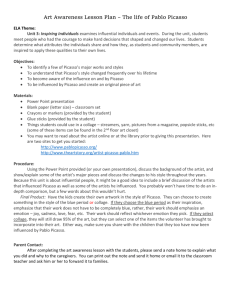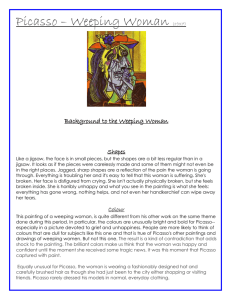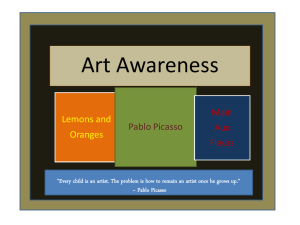Day 22: Picasso, Braque, and Cubism II
advertisement
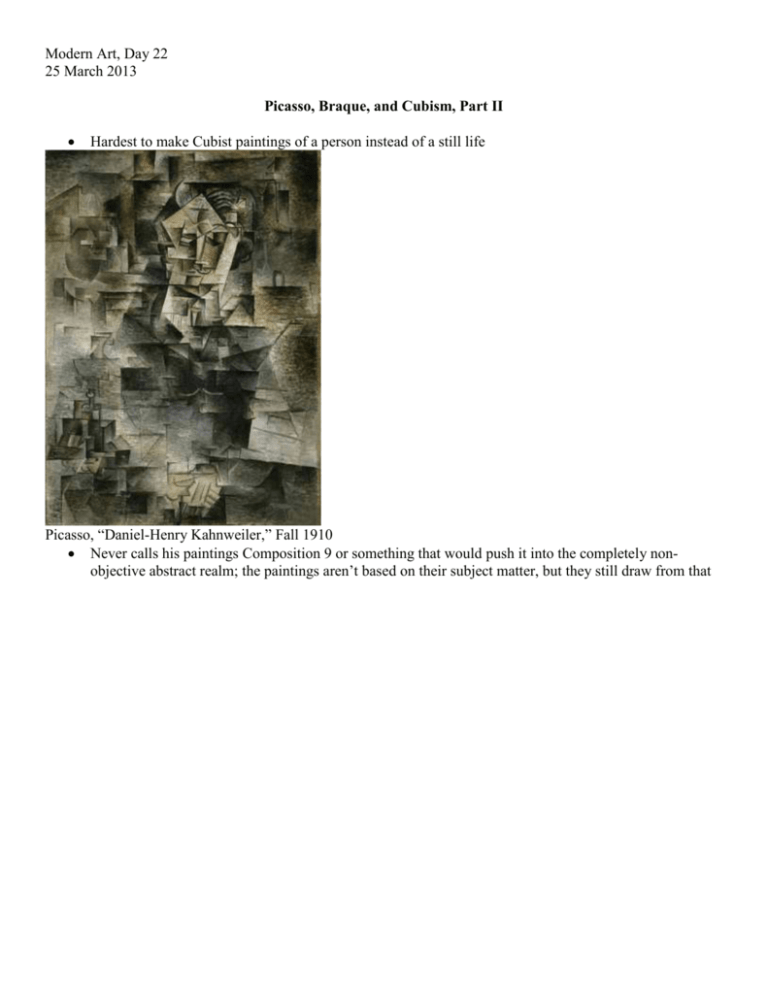
Modern Art, Day 22 25 March 2013 Picasso, Braque, and Cubism, Part II Hardest to make Cubist paintings of a person instead of a still life Picasso, “Daniel-Henry Kahnweiler,” Fall 1910 Never calls his paintings Composition 9 or something that would push it into the completely nonobjective abstract realm; the paintings aren’t based on their subject matter, but they still draw from that Braque, “Violin and Pitcher,” 1910 tries to reconnect Analytic Cubist painting to reality illusionistic nail painted at the very top of the painting that has not been integrated into the Cubist blocks Braque, “The Portuguese Waiter,” 1911 Picasso, “Ma Jolie,” Winter 1911-12 used printed letters to flatten the painting, for decorative function, to designate the nominal content of the picture, and sets in motion a period of experimentation with ways to affirm the flatness of the surface; if you make an obvious acknowledgement of that, it frees you to make your subject matter less fragmented and more recognizable use tall rectangular frame because these are portraits Picasso, “Still Life with Chair Caning,” May 1912 Picasso, “Man with Hat,” 1912 Make lots of allusions to contemporary culture, such as cafes, commercial products, and newspapers Picasso, “Guitar,” 1912 (metal and wire sculpture) Picasso owned Grebo masks New process introduced with how you make sculpture; this is an assemblage rather than a modeled manipulated medium like clay or marble subject matter is unimportant compared to typical sculptures which are monumental and meant to honor someone or an event in history that was very important Picasso, “Glass of Absinthe,” 1914 Added a sugar strainer to this on top Cubist painting in sculpture form wedge that juts out and hole in sculpture mimics the effect of light reflecting off the glass dots are typical of this time period Synthetic cubism: characterized by resynthesizing of reality solid planes of unmodeled color; appear to be pieces of solid-color construction paper pasted on top of a canvas; appears this way even when painted sometimes mix 3D elements on Synthetic cubist paintings, such as sand Picasso, “Harlequin,” 1915 almost life-size Picasso did not volunteer to serve in the war but instead continued painting in a subdued way Harlequin was autobiographical figure for Picasso illusionistic elements such as light begin to become more expressive; eye and smile of the figure at the top is kind of inhuman and unnaturalistic may reveal how unsettled he felt during the war or the fact that his mistress Eva was sick in the hospital Picasso, “3 Musicians,” 1921 large dog underneath table read the depth of the room according to the receding wall line on left; this is changed on the right side

